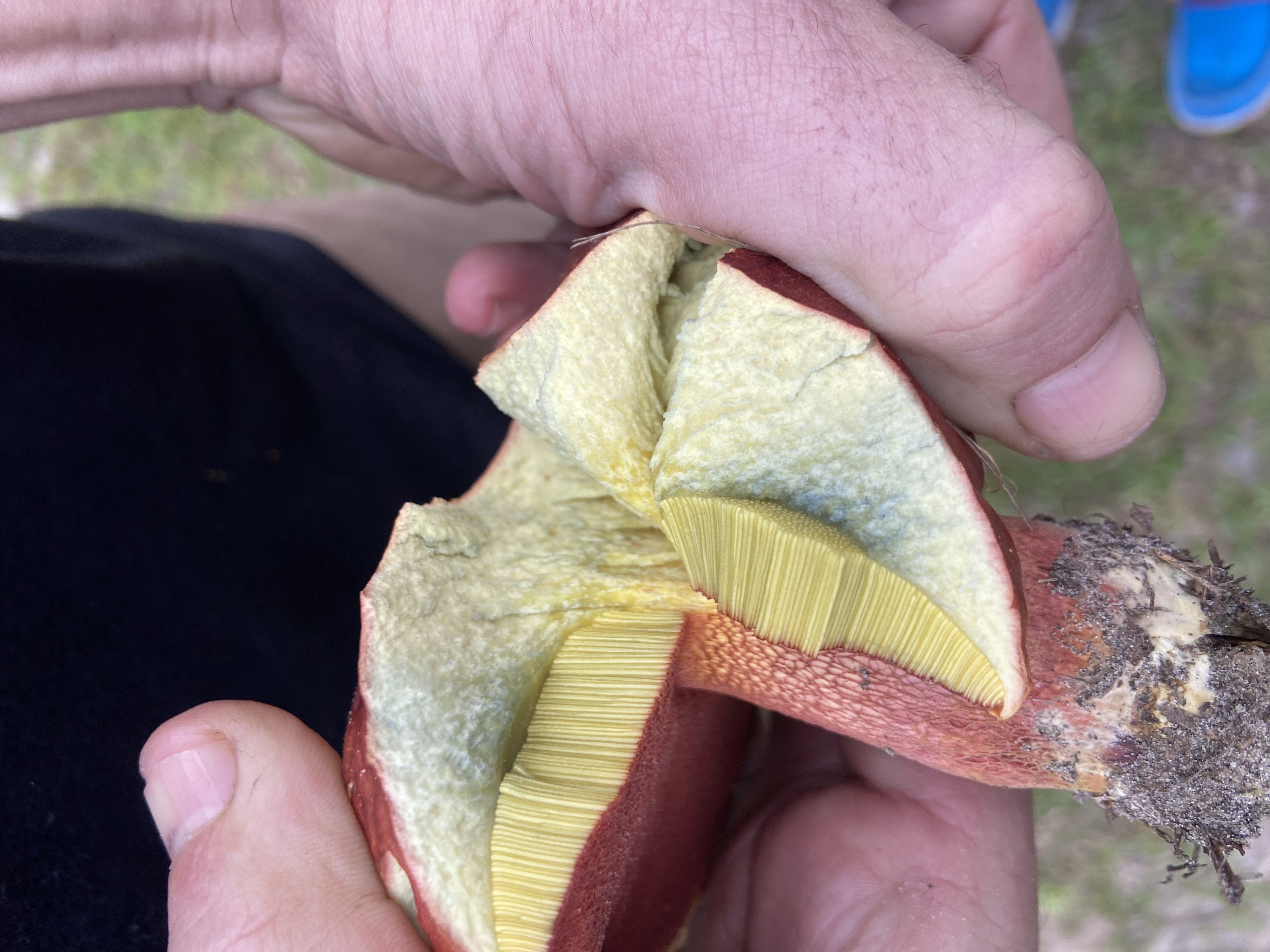Sensitive Bolete
Boletus sensibilis
WARNING: Blue-Staining Bolete Identified - Potential Gastrointestinal Toxin

1 / 3
Wszystkie zdjęcia (3)
Kluczowe cechy
- Cap reddish-orange
- smooth
- Hymenium deep bright yellow (tubes)
- Flesh stains blue rapidly upon cutting
- Robust
- thick stem
- reddish base
- Mycorrhizal association (soil/grass)
Kolor:
Reddish-orange cap, bright yellow tubes, pale yellow context
Zapach:
Unknown
Wzór wzrostu:
Single
Środowisko:
Soil
Siedlisko i występowanie
Siedlisko:
Grassland or lawn, likely near host trees
Występowanie:
North America (primarily Eastern)
Sezonowość:
Summer to early Fall
Wartość ekonomiczna
Popyt rynkowy:
None - toxic
Zakres cenowy:
N/A
Użytek komercyjny:
None
Informacje o toksyczności
Objawy:
- Nausea and vomiting
- Severe diarrhea
- Abdominal cramping
Czas wystąpienia objawów:
30 minutes to 3 hours
Pierwsza pomoc:
- Seek immediate medical attention
- Maintain hydration
Kontakty alarmowe:
- 911 (US)
- Poison Help (US): 1-800-222-1222
Podobne gatunki
Satan's Bolete
Rubroboletus satanas
Kluczowe różnice:
- Pores typically red or orange-red
- Stem often bulbous and reticulated
Huron Bolete
Boletus huronensis
Kluczowe różnice:
- Often associated with conifers (hemlock)
- Cap usually paler brown/tan
Bitter Bolete
Caloboletus calopus
Kluczowe różnice:
- Stem usually features prominent red reticulation
- Taste is extremely bitter
Zalecane działanie
Do not consume. Securely dispose of specimen. Wash hands thoroughly.